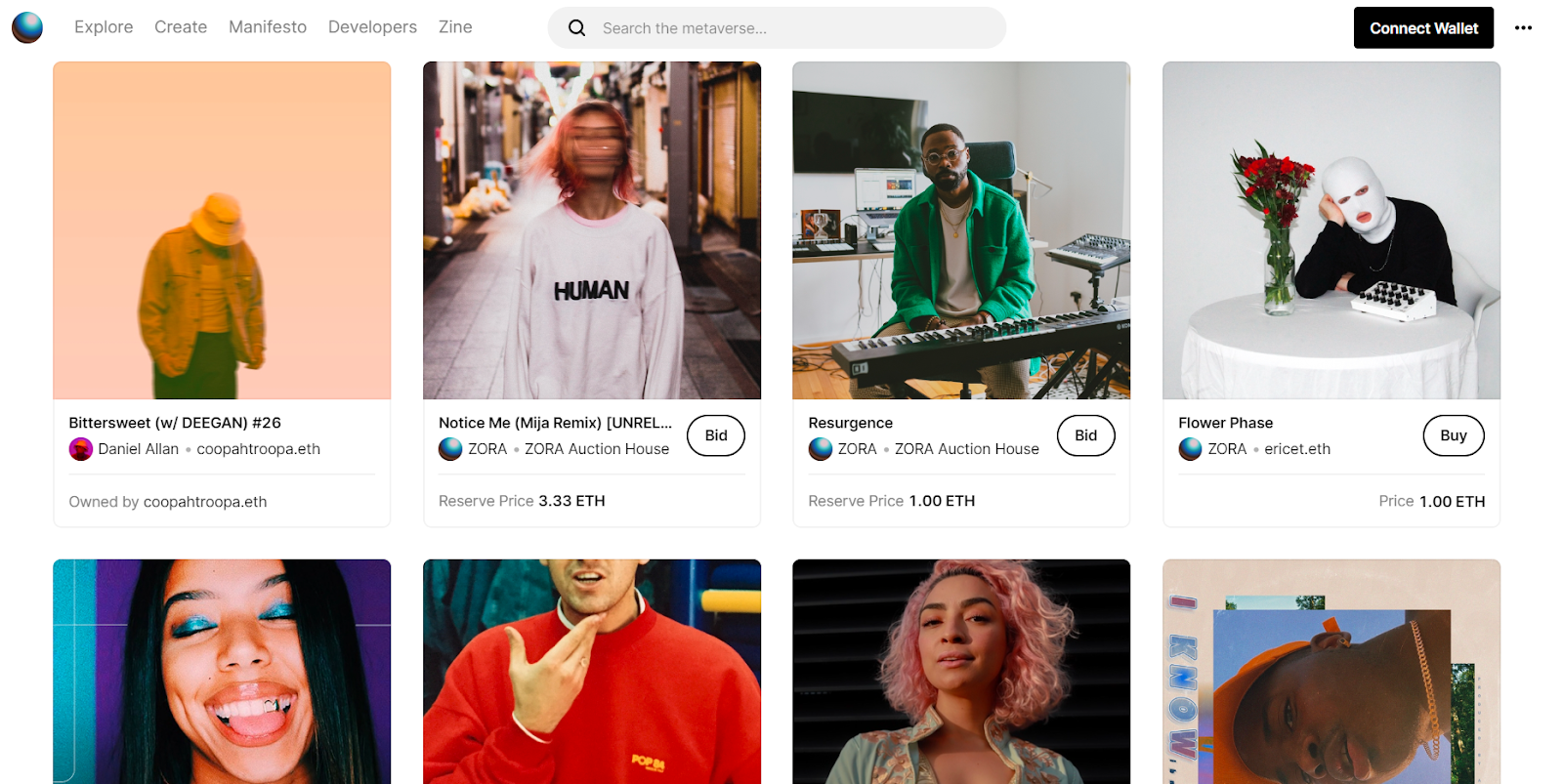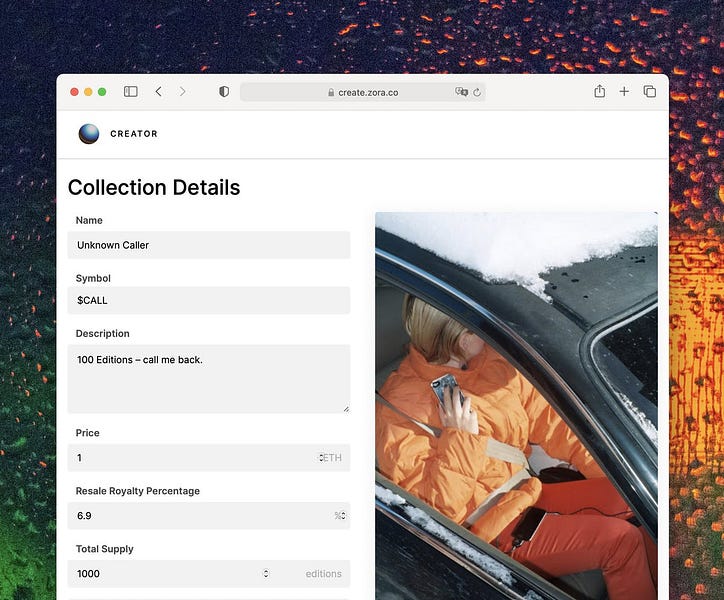Dear Bankless Nation,
Zora is my favorite NFT marketplace protocol for its on-chain structure, slick style, and open-source values.
As some of you may recall, I last wrote about Zora back in January when its creators unveiled Zora V3, which, in my opinion, is something of an on-chain marvel.
Since then, Zora’s builders have been on a tear and released many useful new NFTs tools. According to my count — and I may be missing some! — Zora has released no less than 7 major new resources or functionalities over the past few months.
For today’s Metaversal, let’s walk through what these new tools are and catch up on Zora’s ongoing evolution 🌜🌞🌛
-WMP
Zora is delivering in big ways for on-chain creatives
First, a Zora refresher
Zora is an NFT marketplace protocol that adheres to a “hyperstructure” architecture.
Conceptualized by Zora Labs co-founder Jacob Horne, hyperstructures are “crypto protocols that can run for free and forever, without maintenance, interruption or intermediaries.”
Among other things, for Zora this architecture means the NFT marketplace protocol is free (0% protocol fee), credibly neutral (user agnostic), permissionless (universally accessible), and unstoppable (usable as long as Ethereum exists).

Zooming in further, Zora V3 notably makes use of a novel “modules” system.
To avoid the pitfalls of proxy upgrades or new independent smart contract releases, Zora V3 is based on a few foundational contracts that can support endless extensions via new modules, and each of these modules adds new market functionalities to Zora.
This approach allows Zora’s builders to iterate on features quickly in a gas-efficient way that only requires users to approve their tokens once. Some of the system’s first modules include Asks (sell NFTs at a fixed price), Reserve Auctions (sell NFTs using reserve auctions), and Offers (make an offer on any NFT).
What’s 🆕 at Zora

You’re caught up on the basics of how the contemporary Zora protocol works, so now let’s dive into all the notable resources the Zora team has released in recent months:
1) Auction House

In April 2022, Zora launched Auction House, an “open and permissionless protocol on Ethereum that allows any creator, community, platform or DAO to create and run their own curated NFT auction houses.”
Simply put, the system lets artists and collectors set up on-chain timed reserve auctions (e.g. a 24-hour auction kicks off upon a 1 ETH reserve being met) on their NFT creations or collections.
2) Editions
In May 2022, Zora added an Editions functionality to its creator toolkit. The resource offers a streamlined way to create a limited-edition NFT series for a single artwork. All users have to do is upload their desired work, set up the main mint details (e.g. supply, list price, and royalties), and complete a transaction, then voila! You have your very own NFT collection. Zora’s since launched additional updates to the tool, as well.
3) Drops contract
Also in May 2022, Zora open-sourced the smart contracts of a new style of NFT drop it had developed.
In particular, the drop approach offers tons of flexibility and modularity to NFT projects, plus on-chain royalties and gas efficiency in general.
4) Zora NFT API
NFT data on Ethereum is surging out in all directions. To help builders navigate this swelling sea of data, Zora published the Zora API in June 2022. This powerful resource allows NFT projects to readily search for any kind of ERC721 NFT data, including mints, transfers, sales info, and beyond. Expect many more NFT projects to be built around this API going forward.
5) Timed open editions
In June 2022, the Zora team unveiled a timed open editions feature. This service lets creators launch a limited-edition open edition for a single artwork by setting just a few parameters like starting time, end date, and mint price. This is a cool way to do NFT drops for anyone in your audience who wants one, and Zora’s made the process easy.
6) Redeemable NFTs
Another interesting recent release from Zora has been the Redeemable NFTs tool, which lets creators drop NFTs that are redeemable for physical goods, e.g. a physical wearable version of the iconic red Nouns DAO glasses. To avoid confusion, the Zora protocol separates redeemed and unredeemed NFTs from a series into different collections.
7) Zora Development Kit
Another June 2022 release, the Zora Development Kit, or ZDK, is a hub of tools that makes it simple for developers to build around Zora. If you’re building out a new NFT project and you’re looking to plug into some great infrastructure, the ZDK is a resource I would not sleep on!
Action steps
- 🌜🌞🌛Check out Zora and its new features
- 🙇 Read my previous write-up Big platforms eye Polygon NFTs if you missed it
